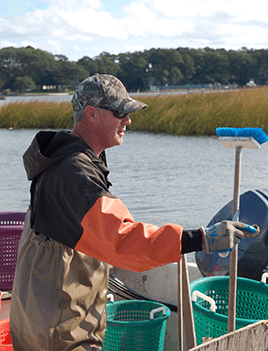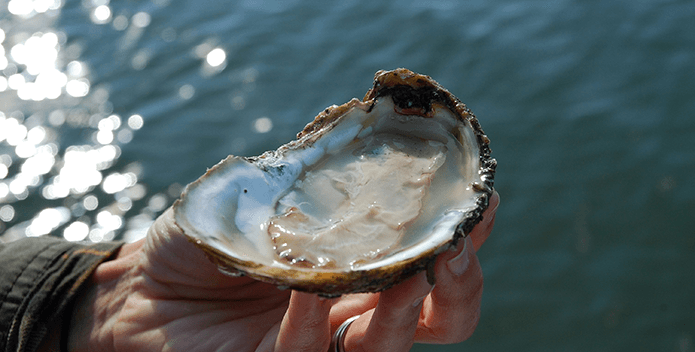The Chesapeake Oyster Alliance is working towards putting 10 billion new oysters in the Bay by 2025, an ambitious goal that relies on support from the Bay's watermen and oyster farmers. Pleasure House Oyster Company, one of the Alliance's aquaculture partners, raises oysters on the Lynnhaven River in Virginia Beach—a renowned tributary where oyster farming is coming back thanks to cleaner water. I recently spoke with longtime waterman Chris Ludford of Pleasure House Oyster Co. about his work.

As a former waterman, Chris Ludford of Pleasure House Oyster Company knows the importance of the oyster to the Chesapeake Bay.
Kenny Fletcher/CBF Staff
Why did you get into the aquaculture business?
I didn't start growing oysters until 2010, as a refugee from the blue crab industry. I left the blue crab industry willingly, voluntarily, so the remaining fishermen could harvest crabs.
What do oysters in the Bay mean to you?
The oyster is a big deal. It means heritage, it means symbolism, it means history, it means the future. The oyster in the Chesapeake Bay is same as the blue crab, the osprey, and the bald eagle. It's one of those celebrity natural resources. For me, I'm proud to say that oysters also mean income.
Why did you join the Chesapeake Oyster Alliance?
I support any effort to improve water quality. If I can help, I'm going to help. I stagger my help on all levels. I have grassroots groups, I have schools that I help. Being involved with the Chesapeake Oyster Alliance is what I call a “big fish”—big involvement and big outcomes.
You also give oyster farm tours. What do people learn on these tours?
I'm surprised that people don't know how many people depend on the oyster for their livelihood, and how many people have been displaced by oyster population decline.
I'm also surprised at how many people are new oyster eaters—it's an oyster revolution. We missed a whole generation while waters were closed, but now millennials and generation X are eating oysters. They are fired up about oysters.
At CBF, we're also fired up about oysters! Learn more about the Chesapeake Oyster Alliance here.
Julie Luecke, CBF Hampton Roads Intern
Issues in this Post
Fisheries Chesapeake Oyster Alliance Eastern Oysters Water Quality CBF in Virginia Hampton Roads Office Virginia Office, Richmond



